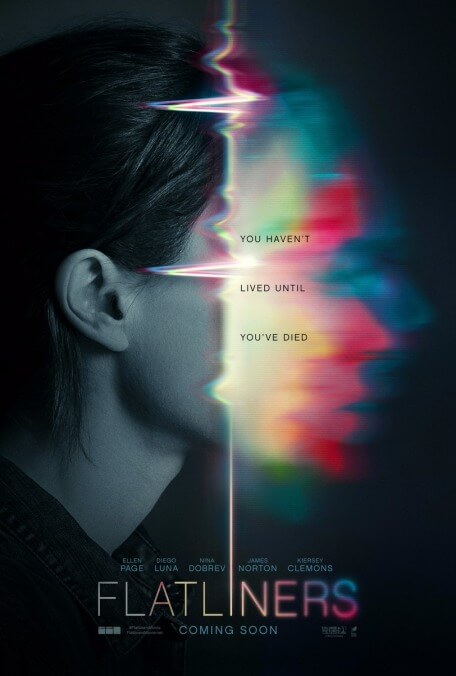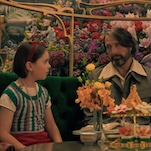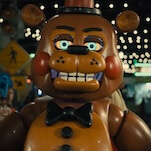The existence of this remake, then, is somewhat puzzling. Flatliners itself, as a “property,” doesn’t really have major nostalgic pull. The new cast, headed by Ellen Page and Diego Luna, isn’t designed to lure unsuspecting viewers into garbage. Is it possible that screenwriter Ben Ripley (Source Code) managed to come up with a more compelling take on the material? Is this a rare example of Hollywood taking old dross and spinning it into contemporary gold?
Nope. Flatliners 2017 is the same dumb movie as Flatliners 1990, minus most of the surface charisma. Med student Courtney (Page, insufficiently obsessive) yearns to know what happens after death, and ropes four fellow students—Ray (Luna), Marlo (The Vampire Diaries’ Nina Dobrev), Jamie (English actor James Norton, playing American), and Sophia (Kiersey Clemons, the main girl from Dope)—into sneaking down to their hospital’s basement for some experiments in what amounts to assisted temporary suicide. One by one, they each have their heart stopped for two to three minutes, getting a brief glimpse of the afterlife before being resuscitated. At first, the experience has a druglike effect, inspiring a euphoric feeling that lingers for hours and somehow “rebooting” dormant memories and abilities. The aftereffects soon take a considerably darker turn, however, with all four of the flatliners (Ray declines to die, participating only as an observer/assistant) stalked by people they’ve wronged, in what may or may not be hallucinations.
Ripley demonstrated some ingenuity with Source Code, but he fails to solve this premise’s fundamental problem. Creating necessary tension during the flatlining scenes requires that the characters nearly die, permanently; every single time, there’s frantic medical activity and shouts of “It isn’t working!” Yet Jamie is unaccountably eager to have his heart stopped after watching Courtney barely make it back, and Marlo insists that she’s next right after Jamie almost winds up in the morgue, and so on. What we see of the ostensible afterlife—just ordinary depopulated locations on Earth, made mildly strange via smeared neon or overexposure—doesn’t justify all this mortal recklessness. Neither do the lame “powers” the flatliners acquire after dying, which involve slow-motion shots of club dancing and—hilariously—the others looking on in wonder at Courtney playing the piano (unremarkably), marveling that she can now play again. It’s not as if she’d broken her hands. She’d just… forgotten? And now she remembers? Or something?
None of the actors succeeds in making any of this nonsense credible, or even in establishing much of a personality. The movie’s second half traps all of them in generic jump-scare horror sequences, indifferently staged by director Niels Arden Oplev (best known for the Danish version of The Girl With The Dragon Tattoo). As in the original, efforts at spookiness are undermined by sappiness; the flatliners come to understand that they need to be forgiven by those they harmed, or forgive themselves, turning what should be a tale of fanatical hubris into a lightweight self-help manual. Sutherland, who turns up in a dull cameo role as the students’ instructor, has suggested that he is in fact still playing Nelson Wright, his character from the 1990 version. That makes zero sense given what occurs onscreen (at best it would entail a truly ludicrous coincidence; the prof remains oblivious throughout), but maybe Sutherland just felt obligated to say anything he could think of that might lend a little intrigue to this pointless rehash.









































